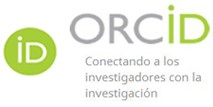Artificial intelligence in educational planning: A new tool for teachers
DOI:
https://doi.org/10.62697/rmiie.v4i3.235Keywords:
Artificial intelligence, teachers, educational planningAbstract
This article explores the potential of artificial intelligence (AI) in lesson planning by primary school teachers within the context of the New Mexican School. The COVID-19 pandemic accelerated the use of digital tools, prompting teachers to adopt platforms such as YouTube, Classroom, and Zoom. However, although these technologies facilitated teaching, the question arises about the teacher’s relevance in a digital environment. This study reaffirms the indispensable role of the teacher in fostering critical and creative thinking. Using a qualitative approach, teachers from Hidalgo, Puebla and the State of Mexico were interviewed to explore their experiences with AI tools such as Canva, ChatGPT, and Gemini. The results show that 33.3% of respondents consider AI "very useful" for lesson planning, while 66.7% find it "somewhat useful." However, all expressed an interest in learning more, noting the lack of specific ongoing training as a barrier. The study concludes that, despite the challenges, artificial intelligence has the potential to optimize teaching and personalize learning. However, to achieve effective integration, it is essential to offer accessible training programs that foster technological innovation. The research suggests that AI can transform education if it is accompanied by changes in teaching practices and greater collaboration between researchers and educators.
Downloads
References
Acosta-Servín, S., Veytia-Bucheli, M. G., & Cáceres-Mesa, M. L. (2025). Innovar en la práctica docente. Desarrollo de competencias digitales en la Licenciatura. Sophia Editions.
Benavides, C., & Ruíz, A. (2022). El pensamiento crítico en el ámbito educativo: Una revisión sistemática. Revista Innova Educación, 4(2), 62-79. https://dialnet.unirioja.es/descarga/articulo/8245583.pdf
Casimiro-Urcos, W. H., Casimiro-Urcos, C. N., Quinteros-Osorio, R. O., Tello-Conde, A. R., & Casimiro-Guerra, G. (2025). Docentes conectados: Evaluando las competencias digitales en la Educación Superior. Sophia Editions.
Gangotena Echeverría , G. S., Yuctor Álvarez, A. F., Arias Espinosa, M. J., López Aguayo, E. M., & Luna Rodríguez, P. M. (2023). Recursos digitales con Inteligencia Artificial para mejorar el Aprendizaje de los Estudiantes de Primaria. Ciencia Latina Revista Científica Multidisciplinar, 7(4), 1463-1481. https://doi.org/10.37811/cl_rcm.v7i4.6967
México. Secretaría de Educación Pública. (2022). Plan de estudios para la educación preescolar, primaria y secundaria. https://educacionbasica.sep.gob.mx/wp-content/uploads/2024/06/Plan-de-Estudio-ISBN-ELECTRONICO.pdf
Montiel-Ruiz, F. J., & López Ruiz, M. (2023). Inteligencia artificial como recurso docente en un colegio rural agrupado. RiiTE Revista interuniversitaria de investigación en Tecnología Educativa, (15), 28–40. https://doi.org/10.6018/riite.592031
Moreno Padilla, R. D. (2019). La llegada de la inteligencia artificial a la educación. Revista De Investigación En Tecnologías De La Información, 7(14), 260–270. https://doi.org/10.36825/RITI.07.14.022
Pitluk, L. (2006). La Planeación Didáctica en el Jardín de Infantes. Homosapiens.
Riera-Pesántez, F. M. (2024). Menos burocracia, más enseñanza: El impacto de la inteligencia artificial en la carga administrativa de los docentes. Revista Científica De Ciencias Humanas Y Sociales RECIHYS, 2(3), 45-52. https://doi.org/10.24133/recihys.v2.i3.3785
Taylor, S. J., & Bogdan, R. (1984). La observación participante en el campo. Paidos.
Downloads
Published
How to Cite
Issue
Section
License
Copyright (c) 2025 Roberto Bautista-López

This work is licensed under a Creative Commons Attribution-NonCommercial-ShareAlike 4.0 International License.
Authors who publish in Revista Mexicana de Investigación e Intervención Educativa (RMIIE), of Universidad Pablo Latapí Sarre agree to the following terms:
1. Copyright
Authors retain unrestricted copyright to their work. Authors grant the journal the right of first publication. To this end, they assign the journal non-exclusive exploitation rights (reproduction, distribution, public communication, and transformation). Authors may enter into additional agreements for the non-exclusive distribution of the version of the work published in the journal, provided that acknowledgment of its initial publication in this journal is given.
© The authors.
2. License
The articles are published in the journal under the Creative Commons Attribution-NonCommercial-ShareAlike 4.0 International License (CC BY-NC-SA 4.0). The terms can be found at: https://creativecommons.org/licenses/by-nc-sa/4.0/deed.en
This license allows:
- Sharing: Copying and redistributing the material in any medium or format.
- Adapting: Remixing, transforming, and building upon the material.
Under the following terms:
- Attribution: You must give appropriate credit, provide a link to the license, and indicate if any changes were made. You may do this in any reasonable manner, but not in any way that suggests the licensor endorses or sponsors your use.
- NonCommercial: You may not use the material for commercial purposes.
- ShareAlike: If you remix, transform, or build upon the material, you must distribute your creation under the same license as the original work.
There are no additional restrictions. You may not apply legal terms or technological measures that legally restrict others from doing anything the license permits.












